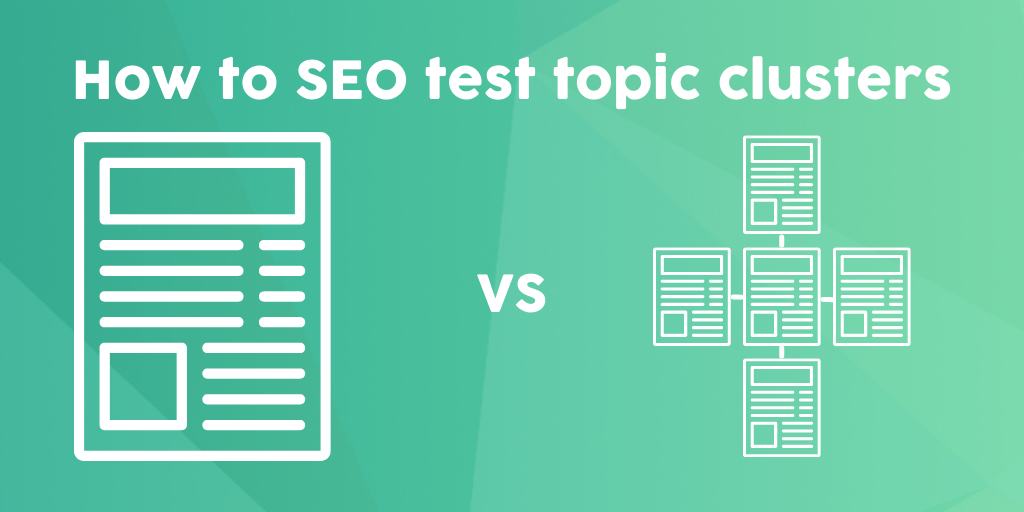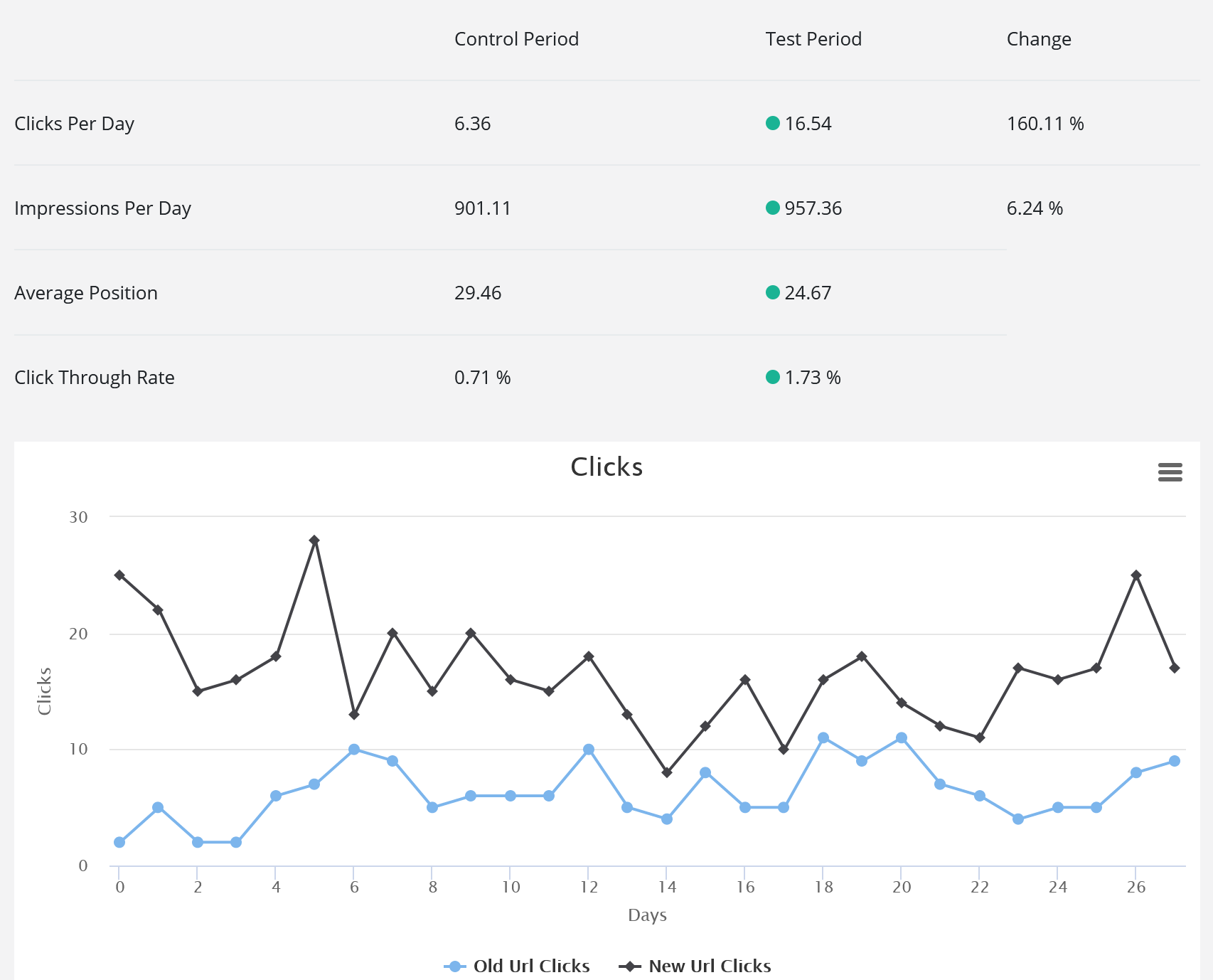If you are in the process of moving from a single article on a topic, to a topic cluster, you can now run an SEO test within SEOTesting.com that will allow you to compare the organic search results from before and after.

Historically writing the ‘ultimate guide’ on a topic was the way to go as Google valued depth and knowledge on a subject. More recently however, there has been a big move to a more topic cluster approach around content, with a pillar and cluster or hub and spoke model being applied.
This means a single page that is the pillar page, with multiple sub pages for each sub topic.
This is useful for a number of reasons
- Shorter articles on a specific sub-topic are easier for users to scan and read
- Search intent and content type can be targeted to specific sub-topic page
- Internal linking between subtopics helps show Google meaning and context
Using Url Switch Tests to run topic cluster experiments
As an example, we have a single page targeting technical SEO.
This is the old url :
example.com/blog/technical-seo
Within the field of technical SEO there are a lot of sub topics that it makes sense to target with their own pages. So we are going to break this single page out into a number of sub-topic pages, and re-write the existing page to be the pillar page. The new urls will be:
Pillar page : example.com/blog/technical-seo
Example sub-topic pages :
example.com/blog/crawling-and-indexing
example.com/blog/core-web-vitals
example.com/blog/internationalization-hreflang
example.com/blog/structured-data
To be able to effectively run this as an SEO test these subtopics and the pillar page need to be published together on the same day (or at least within a day or two).
Once the pages have been added and updated, pop into Google Search Console and request that they be indexed and reindexed as necessary.
We will then run a time based SEO test in SEOTesting.com that compares the organic search results of the period of time when our site had just the old url (the control period) against the period of time that the site has the pillar page and topic cluster pages linked off it (the test period).
This is how we go about configuring the time based Url Switch Test within SEOTesting.com.
1, From the launchpad in SEOTesting.com click on the site you want to setup the test for
2, When within the individual site’s dashboard, click SEO Tests from the left navigation and then ‘Create a new SEO Test’
3, From the list of time based tests you can create, click the button for ‘Create Url Switch Test’
4, Give the test a name and description. The more informative the description the better, as it will help remind you exactly what you were testing when you review the results.
5, In the Old Urls textarea add in the url for the single page on the topic:
example.com/blog/technical-seo
6, In the New Urls textarea add in the old url, as it will now be the pillar page, and the various sub topic pages:
example.com/blog/technical-seo
example.com/blog/crawling-and-indexing
example.com/blog/core-web-vitals
example.com/blog/internationalization-hreflang
example.com/blog/structured-data
7, You can optionally add a 3 character country code if you want to filter the results to a particular country.
8, Next value to set if the ‘Changed Date’. It will default to today’s date – which if you have just published all your new content is the date to leave it as.
9, Finally you can set how long you want the control period and test periods to be. I’d always set this to be 6 weeks as you can always end the test earlier if the results are really positive (or negative) quickly.
Upon clicking ‘Create’, you’ll be asked to confirm the start and end dates for the control and test periods. This gives you the flexibility to move these around so they do not directly follow on from each other if you need a gap between the two periods (for example if it took a week to update/add the topic cluster content).
Reviewing the test results
SEOTesting.com will now go off and collect the data it can for the control and test periods. Google Search Console data is always at least 2 days behind, so there will be a little lag in the daily results starting to flow in if your ‘Changed Date’ was set as today.

Screenshot showing SEO test results for a new content cluster.
Once the data starts to flow in you’ll get a traffic light indicator for the clicks per day, impressions per day, average position and click through rate.
It’s worth remembering as you are publishing topic cluster pages that will cover a topic in more detail, it’s probable that you will start to rank for many more keywords which may mean the average rank is lower in the test period. Also, while the impressions may go up, the clicks may not increase proportionally, which will mean a lower click through rate.
So if your clicks and impressions go up, but the average position and click through rate are down – don’t panic, I would still consider this a good test result.
Backtesting historical changes
If you undertook the process of expanding a single article to a topic cluster 12 months ago and you are wondering whether the results were worth the effort – fear not as you can still set up and run that test.
Google Search Console goes back as far as 16 months, so it is possible to back date the ‘Changed Date’ when setting up your test. SEOTesting.com will then collect the data for the past periods and allow you to see the results.
Using content groups to measure the results from topic clusters over the long term.
Url Switch Tests are really useful for comparing the two time periods directly before and after the topic cluster has been created and published, but what if you want to track the performance of the topic cluster over the long term?
This is where Content Groups in SEOTesting.com are super useful. You can set them up and track the ongoing performance of topic clusters into the future.
If you are looking for some of the top keyword clustering tools that will help you identify new keyword clusters to target for your business, then this blog post on the comprehensive list of keyword clustering tools will help.

